Taking care of aloe vera plants is easier than you might think. This succulent thrives with minimal attention, making it the perfect plant for beginners and seasoned plant lovers alike.
Not only is aloe vera a beautiful addition to your garden, but it also has a soothing gel inside that treats burns, cuts, and minor skin irritations. Aloe vera is as useful as it is attractive.
Keep reading to learn how to care for aloe vera. You’ll get tips for growing aloe vera indoors and outdoors, as well as a free printable care tips sheet.
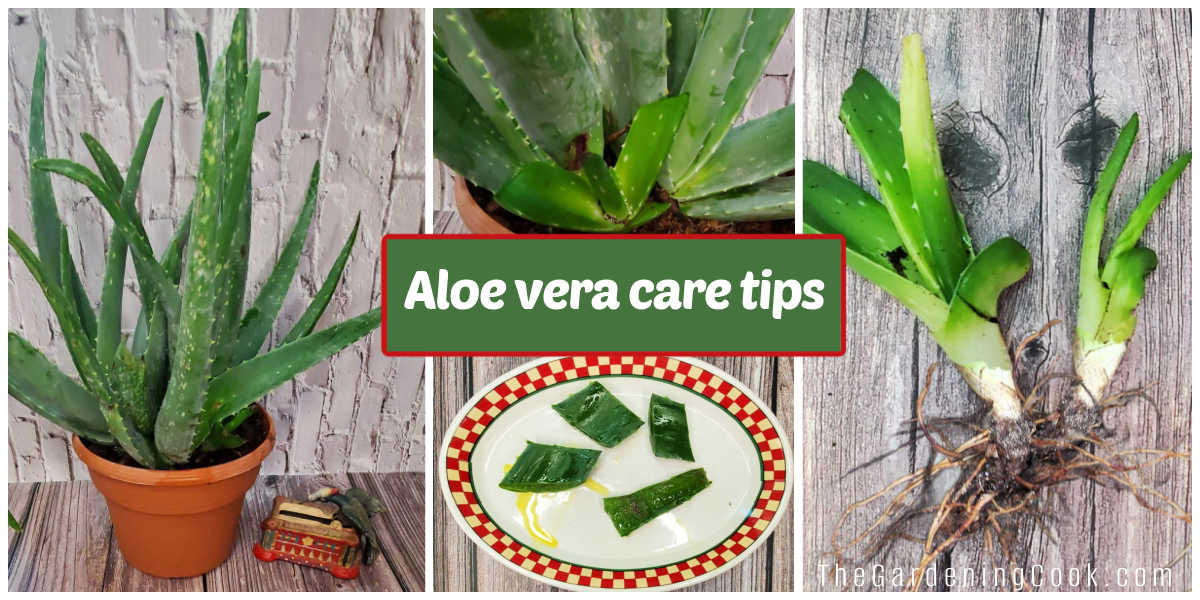
Some of the links below are affiliate links. I earn a small commission, at no extra cost to you, if you purchase through an affiliate link.
Aloe vera care
This table gives an overview of the care of aloe vera plants. It highlights their key characteristics, from soil needs to hardiness zones.
| Common name | Aloe vera, Barbados aloe, medicinal aloe, first aid plant, Indian aloe |
| Botanical name | Aloe barbadensis |
| Family | Asphodelaceae |
| Plant type | Tender perennial, succulent |
| Sunlight needs | Bright, indirect sunlight |
| Soil requirements | Well-draining sandy soil |
| Soil pH | Slightly acidic |
| Bloom time | Late winter to early spring |
| Size | Typically 1-2 feet tall and 1 foot wide (can grow up to 3 feet tall) |
| Flower color | Usually yellow, but also orange, red, and pink |
| Propagation | Offsets, leaf cuttings, and seeds |
| Hardiness zones | 10-12 USDA |
| Native area | The Arabian Peninsula and parts of Africa |
| Toxicity | Toxic to cats, dogs and horses if ingested |
Taking care of aloe vera plant
Here are some care tips to help you get the most out of your plant.
Sunlight needs for aloe vera plants
Give aloe vera plants bright, indirect sunlight. They can tolerate direct sunlight if they are introduced to it gradually.
If you’re growing aloe vera indoors, place it in a south or west-facing window. If you’re growing it outdoors, it will grow in partial to full sun.
In areas with temperatures above 90°F (32°C), give aloe vera some afternoon shade. This will help retain the leaves green color.
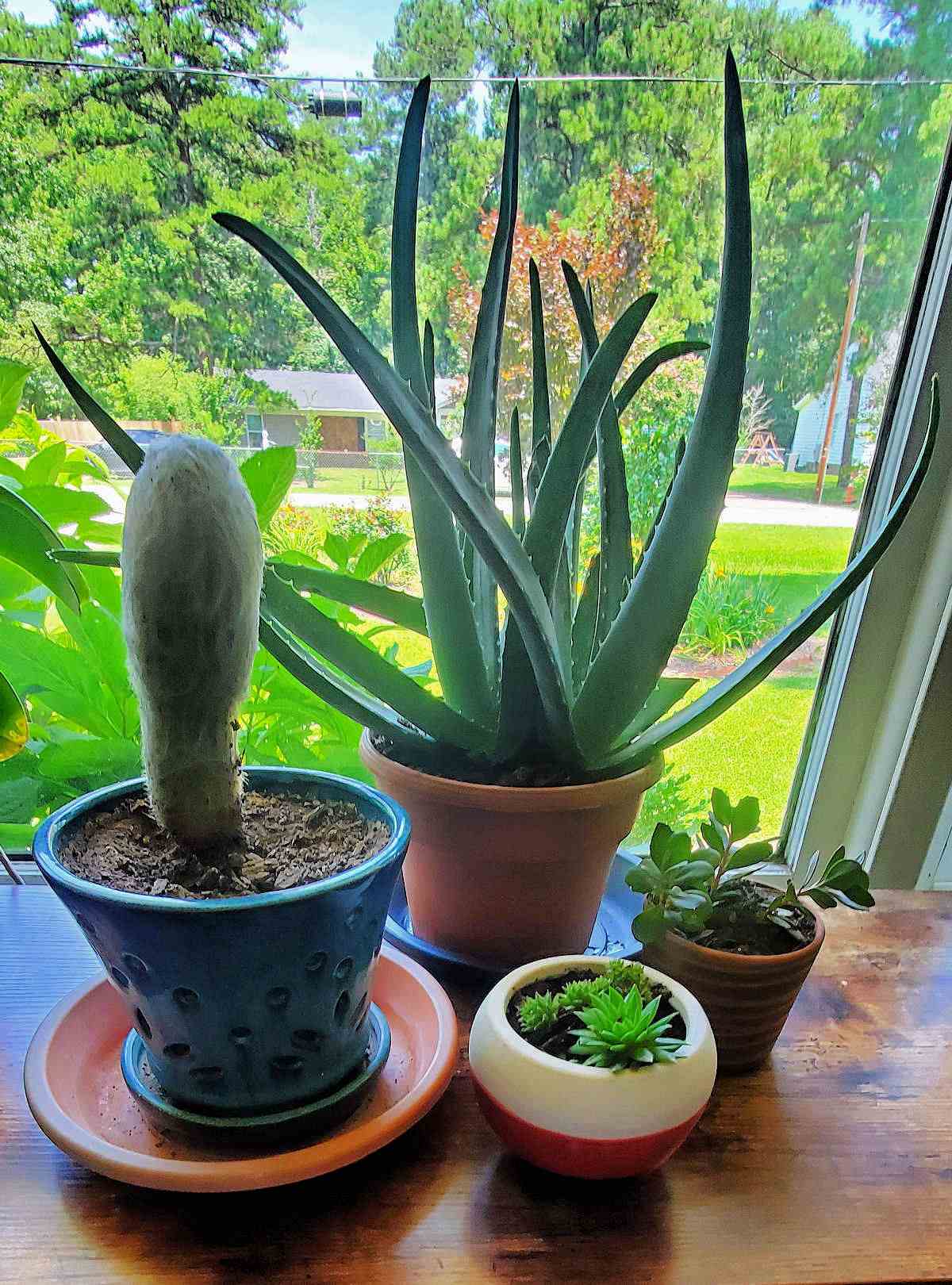
Plants that get too little light will stretch towards the light and lose their compact form. If they get too much sunlight, their leaves can turn brown, yellow, and become scorched.
Because aloe vera stretches towards the light, be sure to rotate your plant every 2 weeks to encourage even growth.
Aloe vera soil requirements
To get the best results from your aloe vera plant, grow it in well-draining sandy soil that is loose and gritty.
Choose a cactus or succulent soil, which is designed to drain quickly. You can also make your own well-draining potting mix, from one part potting soil and one part coarse sand (or one part perlite).
Be sure the pot you grow your aloe vera houseplant in has drainage holes.
Temperature needs for aloe vera
The ideal temperature range for aloe vera plants is 60–85°F (15–29°C). Aloe vera is not frost-tolerant, and prolonged exposure to the cold can damage or kill it.
The lowest temperature aloe vera plants will tolerate is 40°F (4°C). However, it’s safest to ensure they are in an environment that is at least is 50°F (10°C).
How to water aloe vera plants
This drought-tolerant succulent has low water needs. Aloe vera thrives in average household humidity levels and does not need misting.
When watering aloe vera, be sure to water deeply, but infrequently. Let the soil dry out completely between waterings.
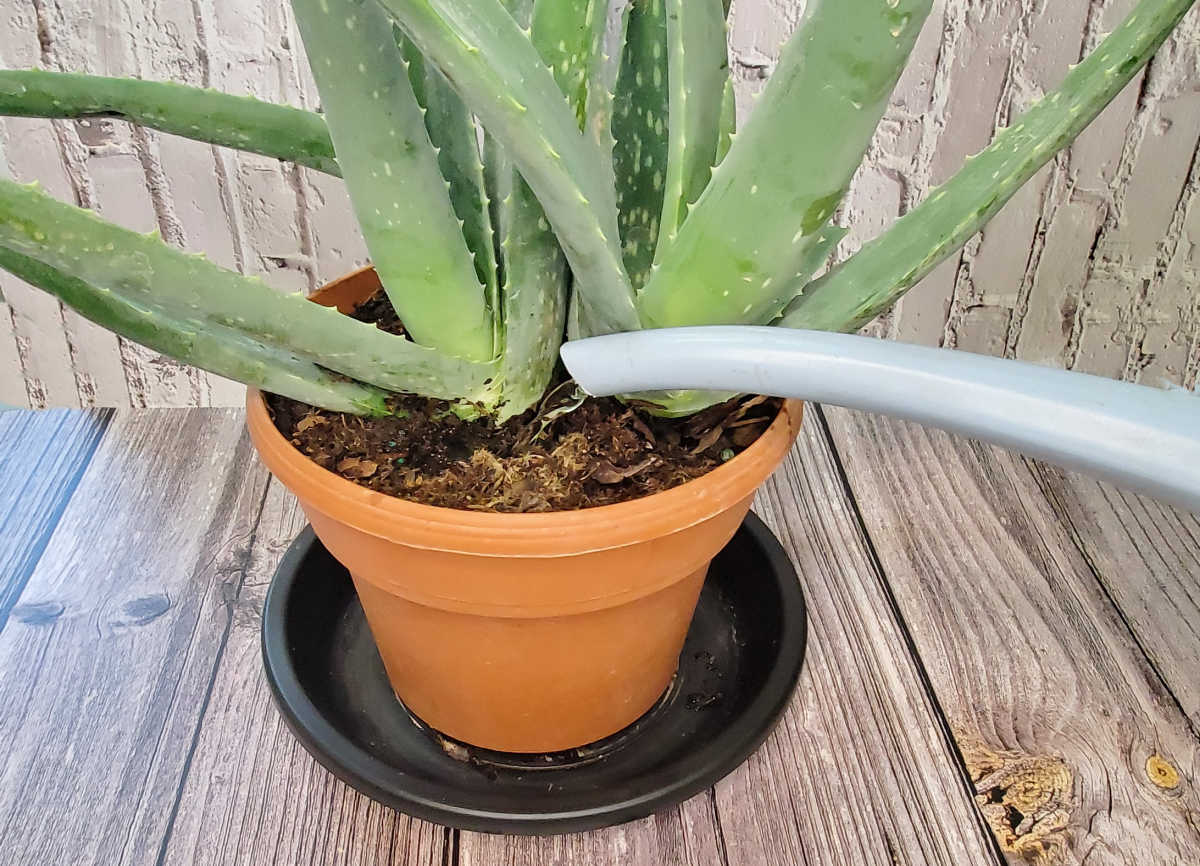
In the summer, most aloe plants need watering every 2-3 weeks. In the winter, when the plants are dormant, watering every 4-6 weeks will keep them alive.
If you live in a very hot environment (such as the south, or California) you will probably need to water more frequently so the plant doesn’t dry out too much.
Make sure to avoid overwatering since can lead to root rot. However, it’s important to note that too little water can cause the leaves to shrivel.
How to fertilize aloe vera
In its natural conditions, aloe vera lives in poor soil, so fertilizing is not necessary. A yearly dose of diluted succulent fertilizer in spring will help to keep the plant vibrant and lush.
Do not fertilize at all in the winter months when the plant goes dormant.
Take care not to over-fertilize, since too much can burn the roots and lead to soft, discolored leaves.
Also, avoid high-nitrogen fertilizer. This can lead to weak, overly plump leaves and damage the plant’s roots.
How big does aloe vera get?
Aloe vera plants are slow growers. Indoors, they typically grow to a height of 12-24 inches (30-60 cm) with a spread of 12 inches (30 cm).
Under ideal conditions, if grown outdoors, aloe vera will grow to a height of 30 inches or more (75cm) with a spread of 18-24 inches (45-60 cm).
The photo below is of an aloe vera plant that was growing in a botanical garden last summer. It was well over 3 feet tall!
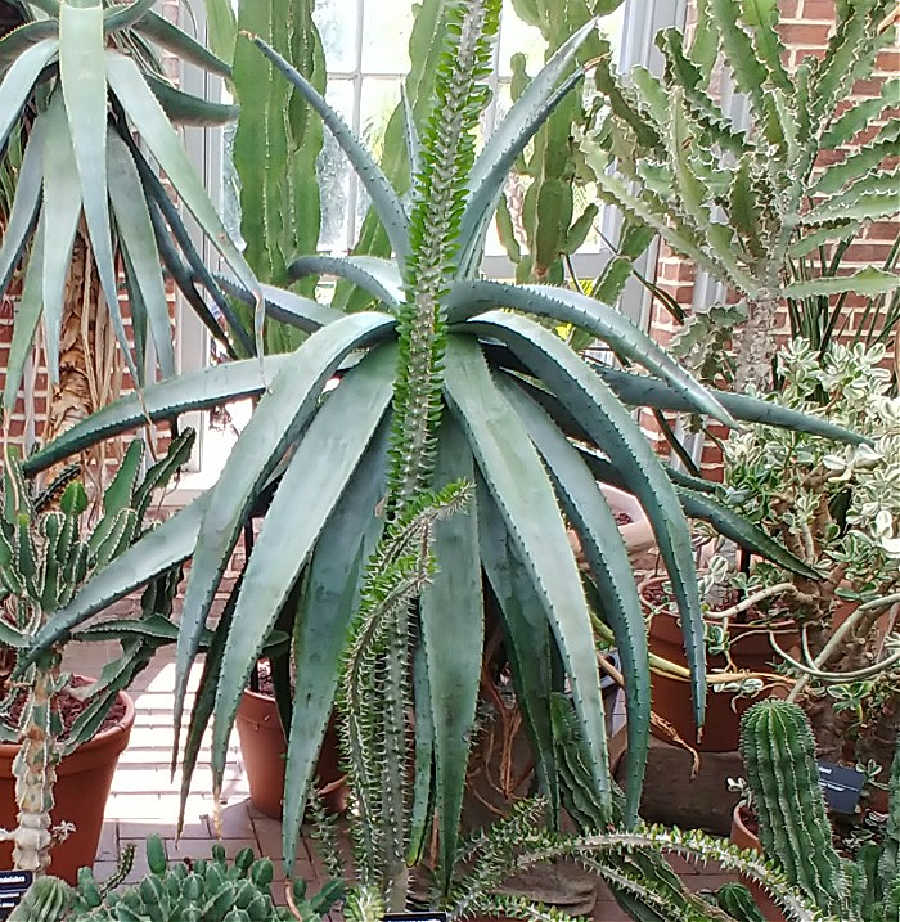
Leaves of Aloe barbadensis and toxicity
The leaves of aloe vera are one of its most distinctive features. They are lance-shaped, thick, and fleshy.
The green to blue-green leaves have soft jagged teeth on the edges.
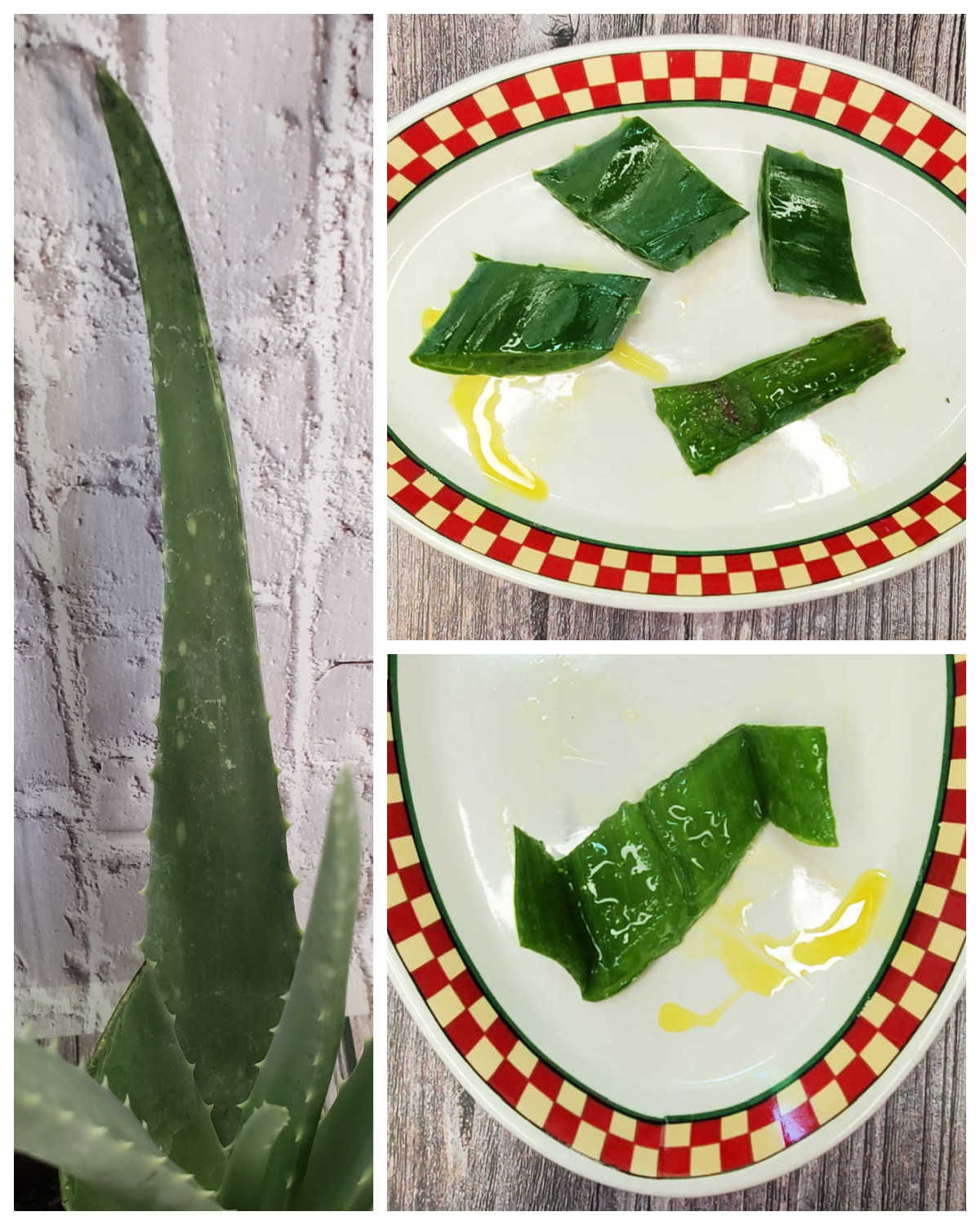
Inside the leaves is a clear gel that is often used for skin care, burn relief, minor wound healing as well as insect and poison ivy itch relief.
Please note that the gel in aloe vera leaves is toxic to cats, dogs, and horses if ingested.
Although ingesting the gel is not as serious for humans, the yellow latex layer (just under the skin of the leaf) must be removed before using the gel internally.
This layer contains aloin, a natural laxative that can cause cramping, diarrhea, and dehydration. For this reason, I recommend using the gel externally rather than internally.
Propagating Aloe barbadensis
The best way to propagate aloe vera is to plant the offsets, also called “pups”, that grow around the base of the mother plant. Choose pups at least 2-3 inches tall, and remove them from the plant with a sharp knife. Keep the roots intact if possible.
Let the pups dry out and place them in a pot with well-draining succulent soil.
It is more difficult to propagate aloe vera plants from leaf cuttings because these often rot before they grow roots due to the gel in the leaves.
Does aloe vera flower?
Getting an aloe vera plant to flower, particularly indoors, can be a challenge. Flowering usually occurs only in mature, well-established plants, that are often several years old.
The flowers grow on stiff spikes, which can be up to 3 feet tall. The blooms are tubular and come in shades of yellow, orange, and red. They look similar to the blooms of red hot poker plants.
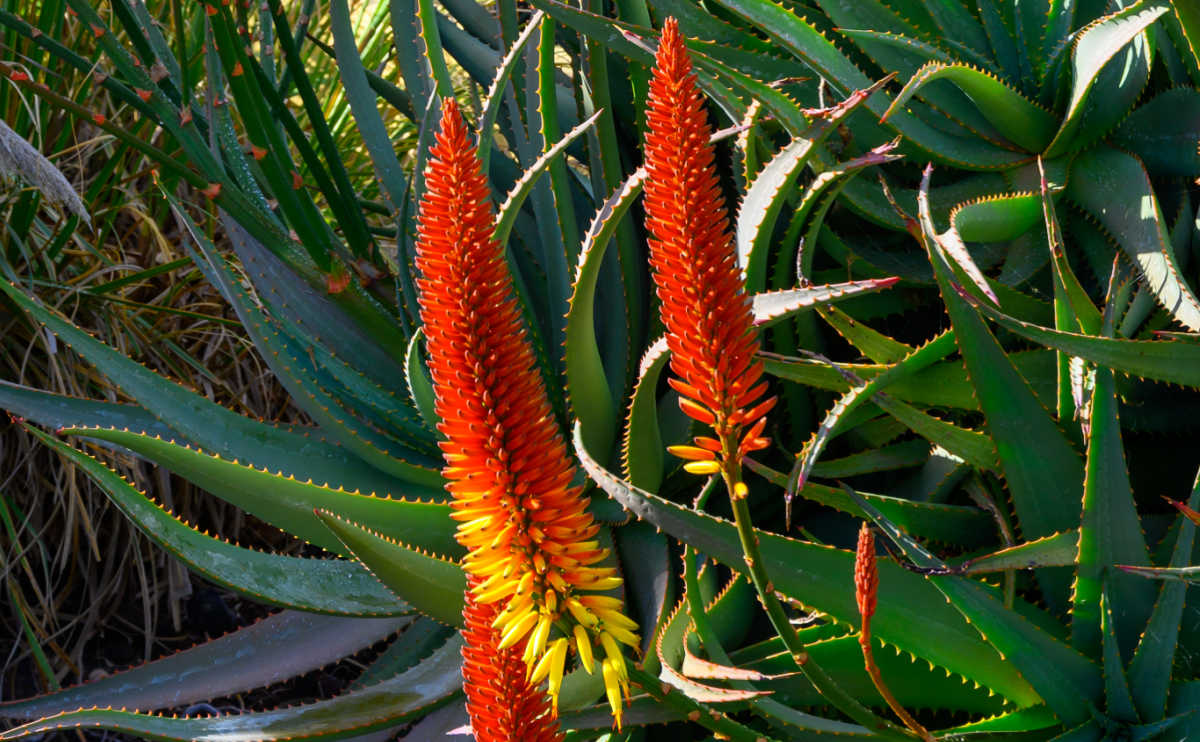
Bloom time is late winter to early spring, but this depends on your climate and growing conditions.
Aloe vera is more likely to bloom outdoors in warm, sunny climates. Though possible, it is challenging to get even a fully mature aloe plant to bloom indoors.
Repotting and pruning aloe vera
It is time to repot aloe vera when it outgrows its pot or produces a lot of pups. This is usually every 2-3 years.
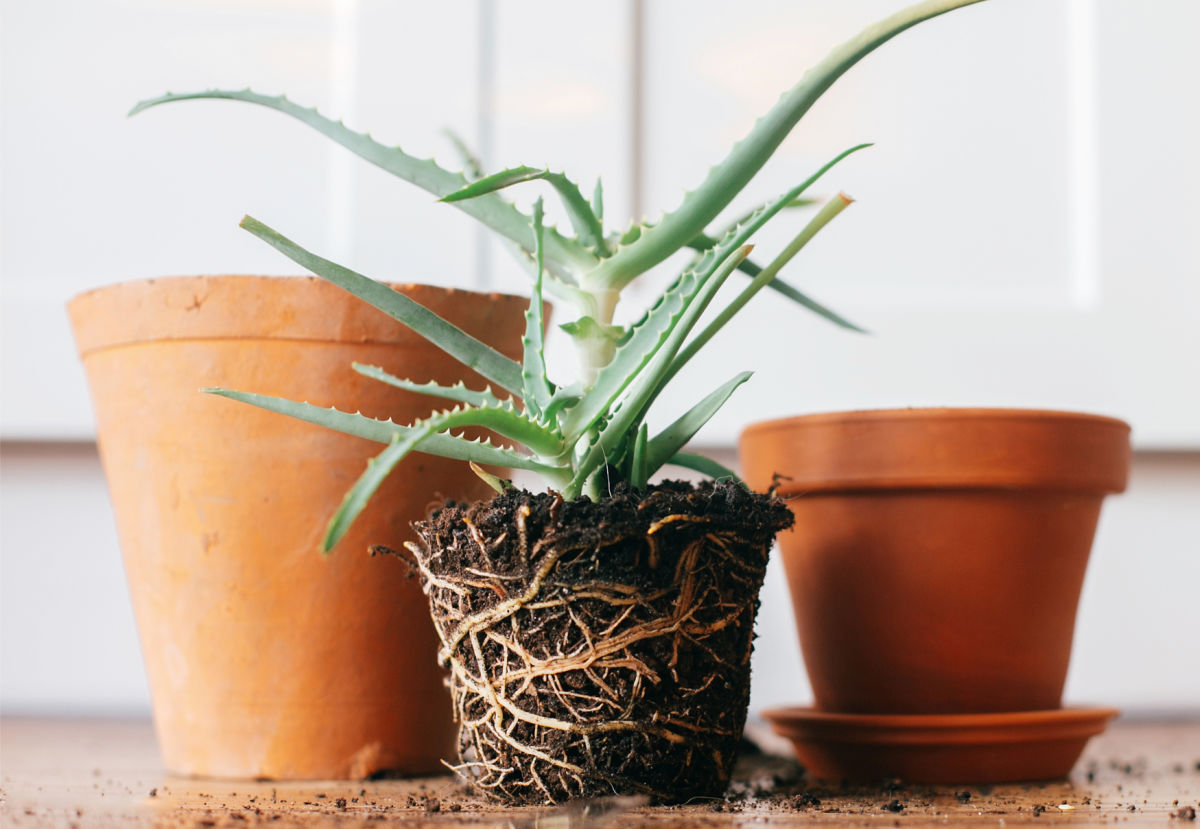
If you notice that roots are growing out of the drainage holes or that the plant is top-heavy and wobbly, it is probably pot-bound and needs to be repotted.
The best time to repot the plant is spring or early summer, during the active growing season.
Common pests and diseases that affect Aloe barbadensis
Aloe vera plants are generally pest and disease-resistant.
However, insects that pose a problem to these plants are soft brown scale, mealybugs, snout beetles, aloe mites, and aphids. Insecticidal soap and Neem oil can be used to treat infestations.
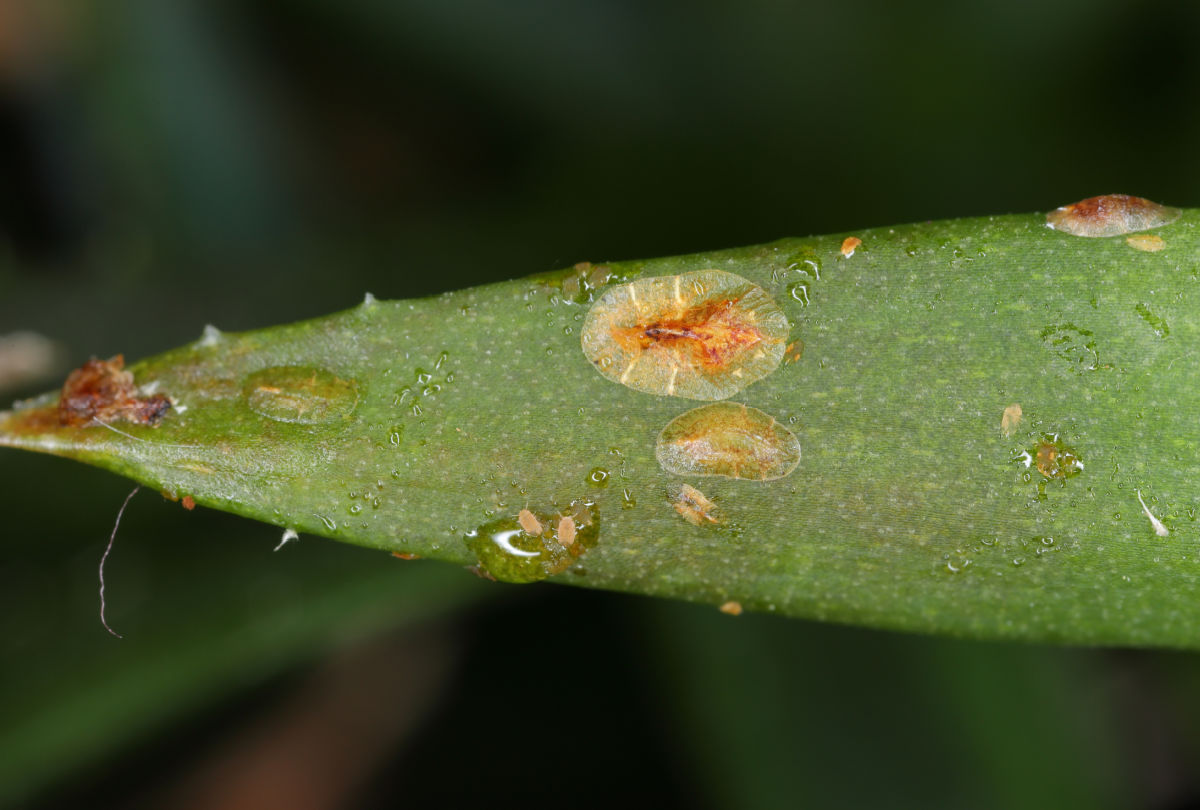
Diseases that might be a problem for aloe vera are basal stem rot and aloe rust. Root rot from overwatering can also be a problem.
Hardiness zones for aloe vera plants
Aloe vera is a tender perennial that cannot tolerate frost. In cold climates, it is typically grown as a houseplant, which is brought indoors if the temperature falls below 50°F (10°C)
It is only cold hardy in USDA hardiness zones 10-12.
Where to purchase aloe vera plants
Practitioners of feng shui believe that aloe vera plants remove toxins and bring good luck. You can get your own aloe vera plant from the links below.
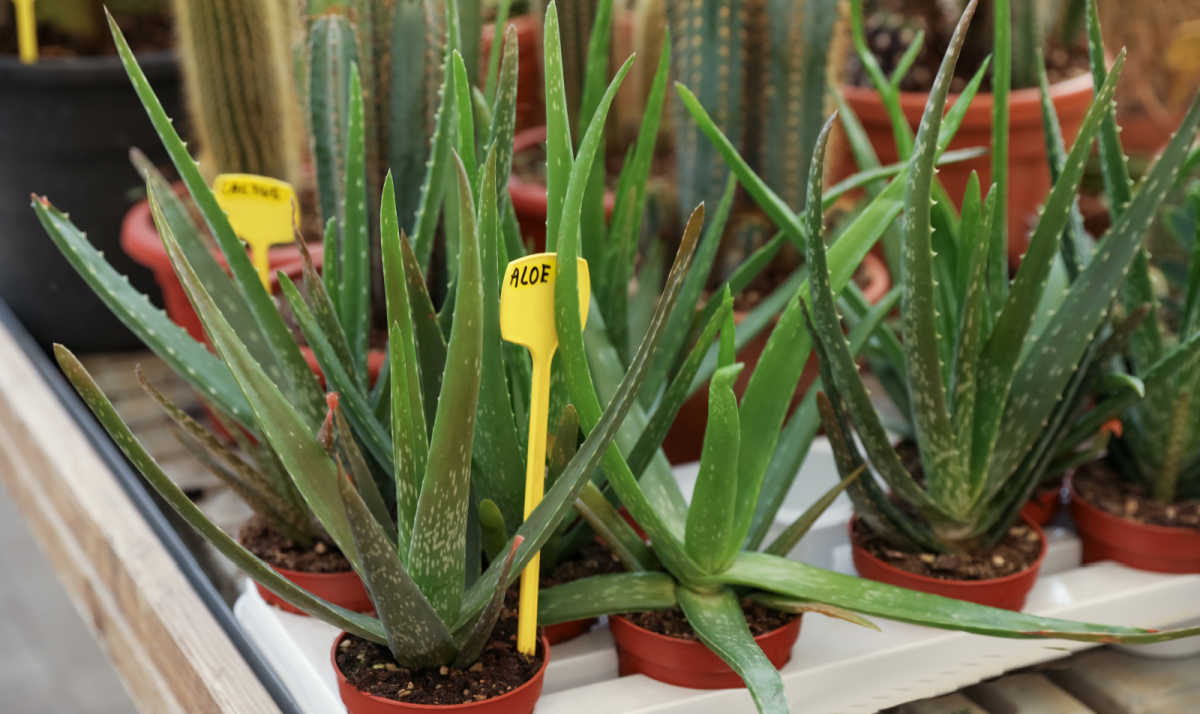
Check the garden centers of both Lowe’s and Home Depot. Your local Farmer’s Market is also a great place to purchase succulents.
You can find aloe vera online from the following retailers:
- Aloe vera plants on Etsy
- Buy aloe vera on Amazon
- Aloe vera at Mountain Crest Gardens
Get a printable showing how to grow and care for aloe vera
If you’d like a reminder on how to care for aloe vera plants, you can print out this aloe vera care guide as a high-resolution image. You can also get it from the project card at the bottom of the post in a slightly smaller size.
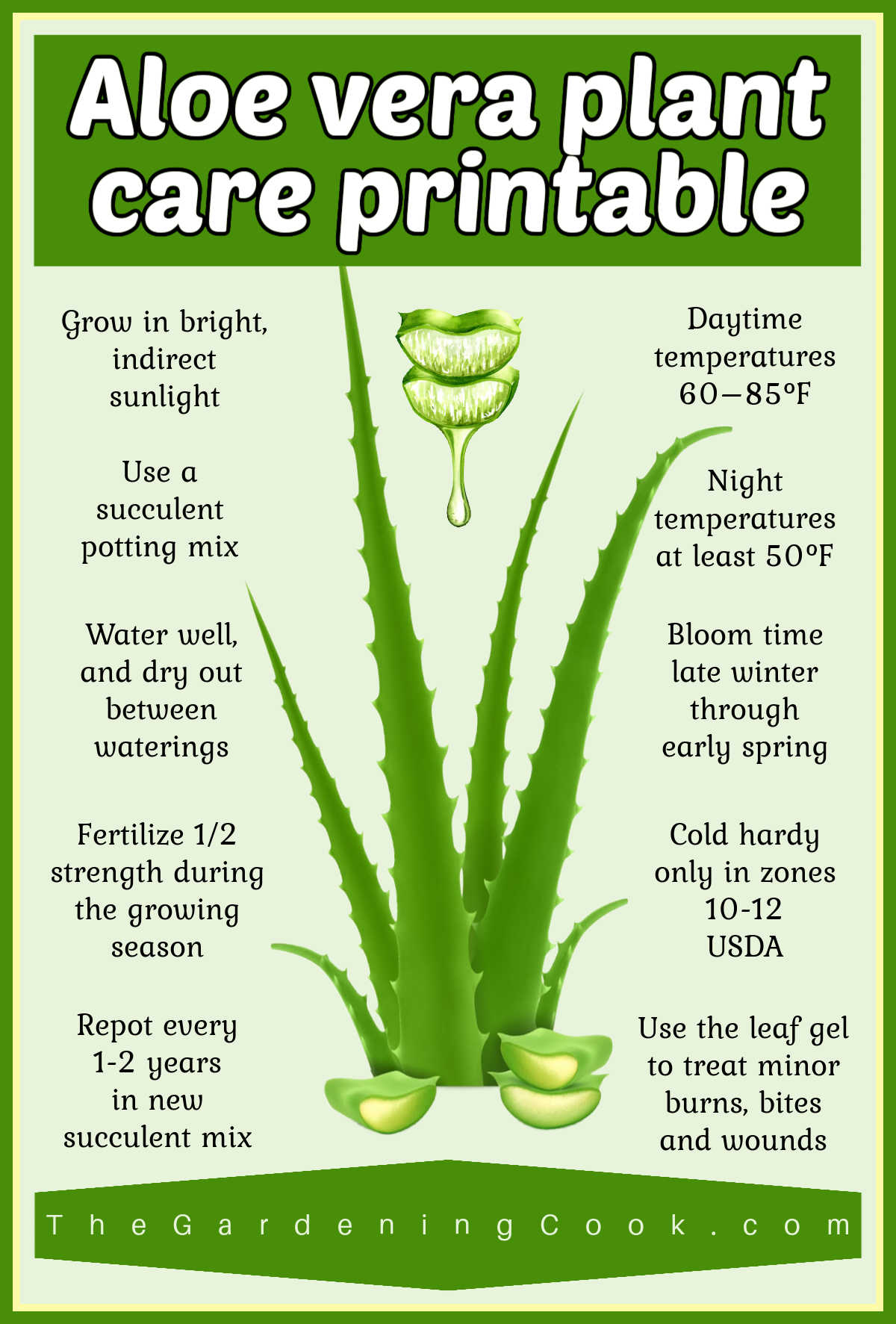
Share these tips for the care of aloe vera plant on X
If you enjoyed learning about growing aloe vera plants, why not share this article with a gardening friend? Here is a post to get you started:
Learn how to care for aloe vera plants on The Gardening Cook. Get basic care tips and a free printable. 🪴💧☀️ #AloeVeraCare #GrowingAloeVera #AloeVera Share on XPin this post for how to grow aloe vera
Would you like a reminder of these aloe vera care tips? Just pin this image to one of your gardening boards on Pinterest so that you can easily find it later.
You can also watch this YouTube slideshow video about how to grow and care for aloe vera!
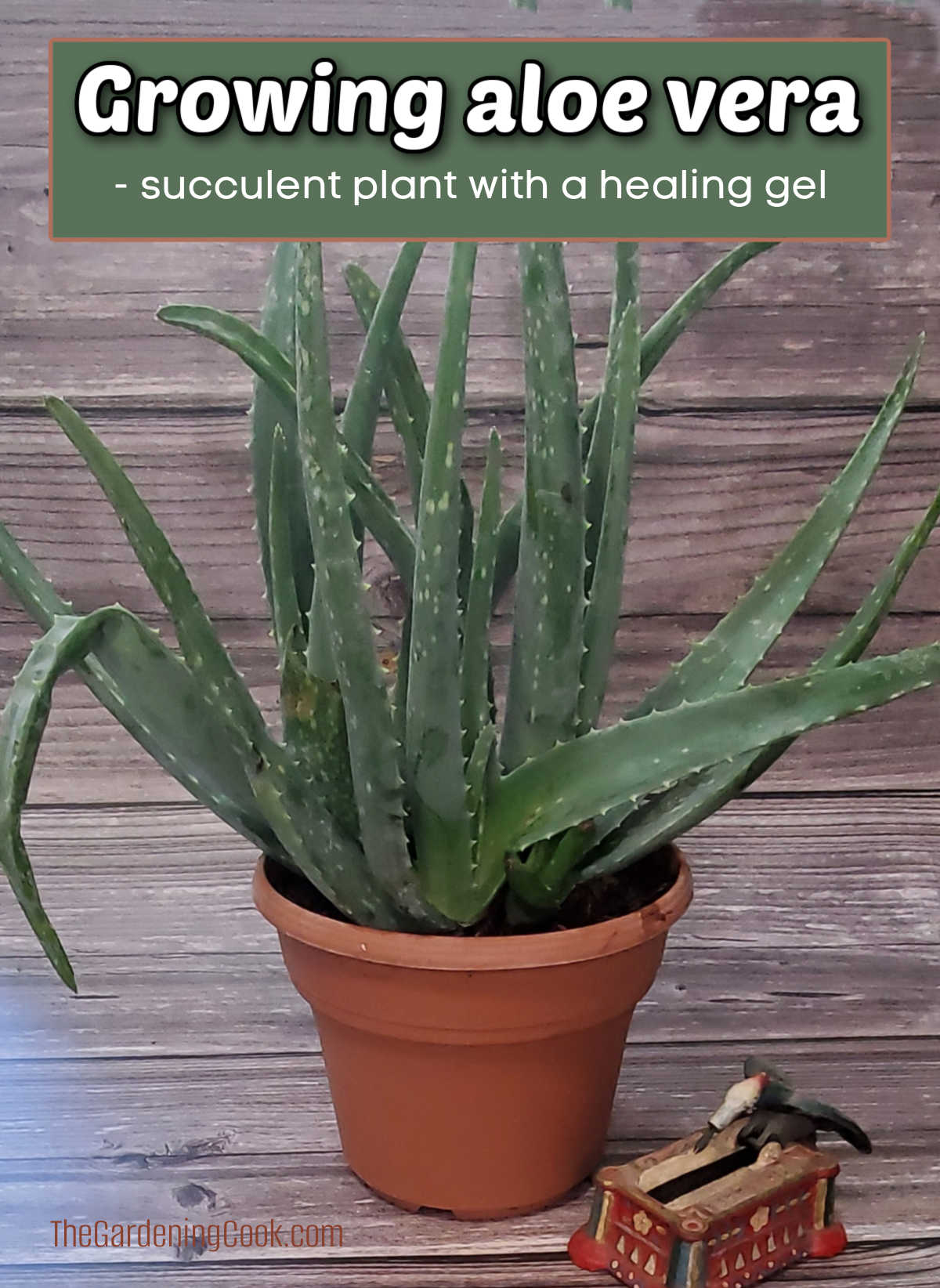
Admin note: This post for the care and benefits of aloe vera plants first appeared on the blog in February 2013. I have updated the post to add all new photos, an aloe vera care sheet printable, and a video for you to enjoy.
Aloe Vera Growing Tips Printable
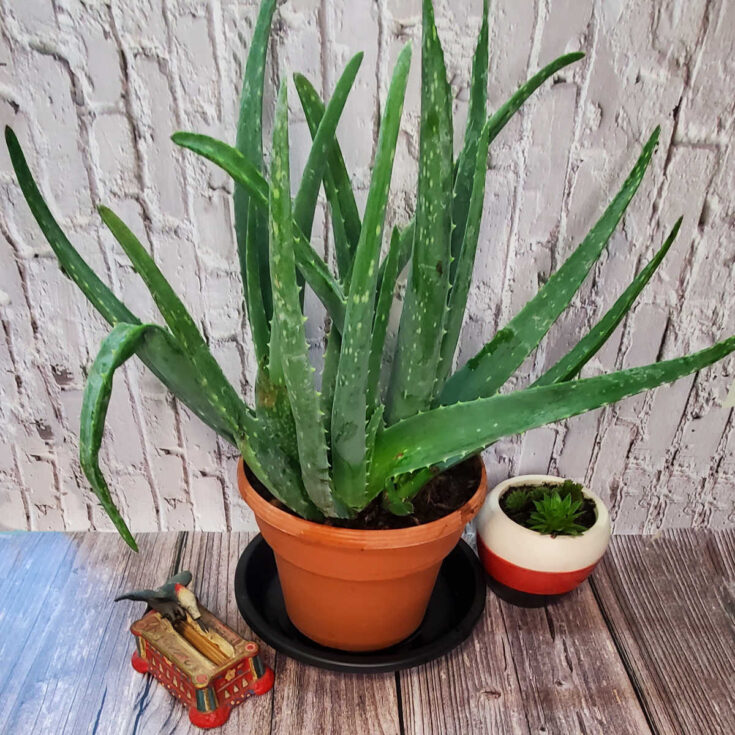
Aloe vera is easy to care for and thrives with minimal attention, making it perfect for beginners and seasoned plant lovers alike.
In addition to being visually appealing, this succulent has a gel in its leaves that treats burns, cuts, and minor skin irritations.
This printable guide will show you tips to grow an aloe vera plant.
Materials
- Printer paper
Tools
- Computer
- Printer
Instructions
- Load your computer paper into your printer.
- Using the print function on this card will print a list of care tips for aloe vera that fills about 3/4 of an 8.5 x 11-inch sheet of paper.
- Choose portrait layout and, if possible, "fit to page" in your settings. Doing this will fill the entire page.
- Alternatively, you can use this link to print the aloe vera tips as a high-resolution image, using the print feature in your browser window.
- After you get the aloe vera houseplant printable, you can add it to your garden journal to reference later.
- Please note: Free garden printables take a long time to make. This list of aloe vera care tips is for personal use only. If you are sharing this aloe vera care printable (and thank you for that!), please link directly to this post and not to the actual image. We appreciate your help in supporting the site. This printable may not be used for any retail purpose or mass distribution.
Notes

Recommended Products
As an Amazon Associate and member of other affiliate programs, I earn from qualifying purchases.



Judie K Thomas
Saturday 11th of February 2023
I had a dime-sized patch of fungus by my right knee. Tried all kinds of creams, etc. to no avail. Got the idea to use Aloe Vera. It turned black and began to heal more each day. Let it dry thoroughly!
zeeshan
Wednesday 4th of November 2020
well written article .aloe vera is a blessing on us
Marti Suedmeyer
Tuesday 5th of September 2017
please share your recommended soil formual/mix for the Aloe Vera plants you mentioned.
Carol
Tuesday 5th of September 2017
Hi Marti. I use a specially formulated soil for growing cacti and succulents, such as this one, or Miracle Grow's cacti and succulent mix. Carol
Joannie Mosey
Friday 7th of June 2013
Aloe vera is a succulent plant species that probably native plant originated in northern Africa. The species does not have any naturally occurring populations, although closely related aloes do occur in northern Africa.